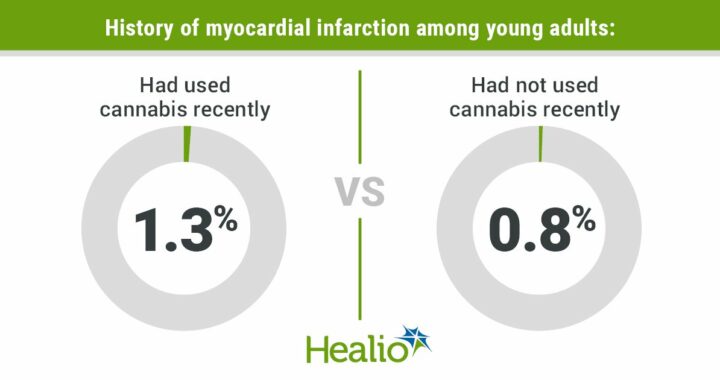Marijuana SEO: The Complete Guide to Marketing for Cannabis and CBD Businesses
26 min read
The American cannabis industry is experiencing an unprecedented boom. The legal cannabis market as of April 2021 is made up of over 10,000 businesses and spans 28 medical and 16 medical/recreational states plus the District of Columbia—ironically, given its uncertain federal status. Only 6 states remain where cannabis is totally illegal.
As the trend toward legalization continues, the space is experiencing rapid growth, with the marijuana industry itself worth $61 billion as of 2021. In 2020, several leading cannabis states—California, Colorado, Oregon, and Washington—broke cannabis sales records.
About This Guide
If you’re looking for a trusted cannabis SEO and marketing company that lives and breathes the cannabis industry (and not just trying to capitalize on a trend), check out Greenbeard.com — a boutique agency run by marijuana industry and SEO experts. We put this guide together to help you grow your cannabusiness. But if you need some extra help or want someone to get it done the right way, get in touch with Greenbeard today.
Overview of the Cannabis Industry
Legal cannabis has generated cottage industries nationwide, including both ancillary and plant-touching businesses. Ancillary operations include delivery apps, PoS systems, armored cars, and IoT soil regulators. Plant-touching businesses include dispensaries, consumer-packaged goods, and multi-state operations.
Even though they traditionally rely heavily on tactics such as email marketing, it is these plant-touching cannabis businesses that most require specialized marijuana marketing and SEO for a variety of reasons.
Dispensaries are the local small and medium businesses (SMB) of the cannabis industry. Often, dispensaries are smaller, local businesses with marketing budgets to match—like any other brick-and-mortar companies—who need to drive sales and foot traffic.
The biggest marketing challenges for dispensaries are usually cost related to limited budgets, raising awareness, and local SEO. Email marketing and SMS lists are critical to dispensaries and help drive repeat business, cross-sell, and improve customer lifetime value, but case studies show they are less effective at gaining new customers. And hiring actual SEO agencies can be cost-prohibitive for SMBs.
Consumer-packaged goods (CPG) are the cannabis brands we all know and love—at least locally. Real CPG businesses and brand names mostly exist in mature recreational markets, but they are gaining ground as they expand to new states. Experts also think interstate commerce will eventually become possible for the cannabis industry.
The biggest marketing challenges for CPG brand businesses are building brand awareness digitally, omni-channel marketing, and assessing the success of their campaigns. Thanks to ongoing clashes between federal, state, and local laws, ethically and legally targeting your brand’s audience safely across digital properties and various marketing channels is a tremendous challenge, as is finding reliable metrics to determine campaign efficacy.
Cannabis and CBD brands share these challenges with one major difference. Because CBD brands can sell their products online, they can connect impressions and clicks to revenue. This means a CBD brand can choose to use more traditional e-commerce marketing tactics or newer strategies like influencer marketing—as long as they meet FDA guidelines.
Multi-state operators (MSOs) are the face of big business in the cannabis industry—the large companies, sometimes publicly traded, that operate dispensaries in multiple states and often have their own in-house CPG brands as well. These businesses demand complex cross-channel media strategies that are legally compliant. MSOs typically face market penetration during expansion, compliance across multiple states, and finding the best ways to spend marketing dollars as their biggest marketing challenges. Whether working with a marketing agency or creating a professional in-house team, the MSO faces huge challenges in how to shape an online marketing strategy.
As more states move to decriminalize and legalize cannabis, hemp, marijuana seeds, and more, demand will continue to grow. It’s no surprise that the industry is now the site of fierce competition, particularly since paid advertising is often off-limits to cannabis-related brands. Still, these businesses can deploy classic public relations tactics, organic social media where possible—and marijuana SEO to gain more exposure.
Why Cannabis Businesses Need Cannabis SEO
There are over 25,000 brick-and-mortar medical and recreational dispensaries across the United States. This is great news, but it also means that consumers have lots of choice when it comes to purchasing cannabis products.
For a cannabis business, brand recognition or creating an online presence that stands out from many possible choices can be a struggle, especially with most marijuana companies barred from traditional forms of media such as radio, television, and billboards in most states. And you cannot, as a cannabis brand, make use of Google Ads to reach the first page of SERPs like other businesses can. As brands get creative to reach their target audience, a strong marijuana SEO strategy is critical.
SEO is a reliable way to fuel brand awareness and drive customers to your website to ultimately buy—in any industry. But for the cannabis industry, SEO is even more central, as various laws at the federal and state levels limit the kinds of outreach that are possible.
Add to this equation the fact that the cannabis industry is growing so quickly. This means changes at top speed, and the need to adapt and compete both locally and across the country. It also means that everyone working in cannabis is working in a competitive industry—without the typical marketing tools at hand.
The expanding recreational cannabis universe demands an outreach plan that is flexible yet sophisticated, and clearly makes your brand voice heard above the noise.
For example, typically businesses will consider paid media options such as social media platforms and AdWords while developing a digital marketing strategy. In a world where that was possible, your brand might purchase several relevant Google Adwords PPC terms such as “Gelato Flower” or “GG4 Concentrate” so potential customers searching those terms in your area would see your search ad near the top of the SERP when they ran those searches.
However, under federal law, marijuana remains illegal. To avoid federal trouble, digital ad platforms, much like their traditional media counterparts, mostly ban cannabis and related product businesses from using their services.
The bottom line is that customers can only find your cannabis website through organic search, and that is why increasing organic traffic via search engine optimization is so important. A thoughtful, well-conceived approach to SEO that includes better web design and optimization, content marketing, backlink acquisition, and other SEO strategies can help any marijuana website climb in the search engine results pages.
Both traditional marijuana dispensaries and e-commerce brands face serious competition, and not just locally. Particularly as bigger cannabis brands gain traction, smaller businesses may feel the struggle even more.
With limited marketing options out there, and restrictions on paid media, marijuana SEO has developed into a speciality, just like enterprise SEO or local SEO. The best way to improve results in SERPs is through a strategic blend of link building, of targeted keywords, and optimized website content.
Protect Your Cannabis SEO
Remember to check the terms of service for your web hosting and platform before developing an SEO strategy. Cannabis content can be—and is—considered “edgy” or unusual by many. Protect your business by selecting providers, including payment providers, that allow this kind of business content. In some cases, you may need to consider international providers.
How Can Customers Find You?
Search engines like Google and Bing prohibit paid ads for anything cannabis-related, but they allow cannabis-related search queries. So users can search for “Gelato flower,” they just won’t find that three-pack of dispensaries at the top as you might normally. Instead you’ll find strain information, and sometimes a few dispensaries, too.
If you search on Google for a cannabis product of some kind, for example, “THC vape oil,” you’ll see lots of cannabis websites, brands, and some local results. If you do a CBD-related search, you’re most likely to get what looks most like a traditional local results search with the three-pack of ads.
But regardless of how you search, you’ll be presented with competing cannabis brands, both represented as physical stores and online shops, locally and nationally. And research shows that most searchers only view page one of their results—so page one has to be the goal for your cannabis brand if improving conversions is the goal.
Since there are literally thousands of cannabis businesses out there, you need to distinguish what sets yours apart. And just as important, who is your target audience, and what are they searching for when they turn to Google? User intent is going to be at the core of your marijuana SEO strategy.
Selecting the best keywords to target is central to any SEO strategy. There are always obvious choices for a dispensary like “dispensary” or “cannabis flower” or “edibles,” but very broad terms like these are not typically good target keywords as they’re nearly impossible to rank for. Determining which keyword rankings are good choices takes experience and the right tools, but in general this involves studying the existing site’s metrics, discerning which keywords the site already ranks for, and finally which keywords offer the best opportunities for the site to climb in the search results.
The keyword research process typically starts with a few factors:
Search volume. This is the number of people who search for the term each month. If you rank for a term that few people search for, it won’t boost organic traffic very much.
Keyword difficulty. This relates to how tough it is to capture a term; the most obvious phrases have a high keyword difficulty. For example, the keywords “marijuana dispensary” and “cannabis edibles” are both very challenging, with keyword difficulties greater than 70. It will be very hard for most sites to achieve the first SERP.
Search intent. This relates to the level of fit between your brand or product and the keyword. Even a low difficulty keyword you can easily achieve will not be useful if it’s unrelated to your brand and business because those searchers will be disappointed when they reach your site anyway.
Domain authority. This score can make some pages hard to beat in rank, no matter how many high-quality backlinks you build. Generally, you should avoid targeting keywords with higher keyword difficulty score than your domain authority score. If you need to build domain authority, you can focus on building backlinks. You can also use the Ahrefs content explorer with the referring domains set to below 5 to find lesser used content ideas and keywords with fewer links that are still authoritative for your research.
A strong marijuana keyword strategy includes both shorter and long-tail keywords, phrases, and terms. User intent is at the heart of selecting the right long-tail keywords, so you should assess the services and products you carry in this light.
You want to imagine ways people might find your site after typing a query into a search engine—and be really excited about what you have there, both in terms of content and products or services. For example, if your dispensary carries medical grade marijuana, you might target the long-tail phrase: does medical marijuana treat nausea?
This leads to the topic of creating blog content to target long-tail search terms. This can be high-quality informational content that establishes you as a reputable brand in the industry, and expands the visitor’s cannabis knowledge even if they aren’t looking to buy. If your content is well-written and valuable, your brand name will be in their mind in a positive way when they are ready to buy.
The other reason to create this kind of content is that Google understands that terms like “marijuana oil” and “cannabis oil” share the same search intent. Selecting keywords isn’t a granular task, it’s really more about selecting target keyword clusters. To avoid keyword cannibalization, don’t create several pages of content on your own site that essentially compete for the same keyword cluster.
Planning Cannabis Content
Once you’ve chosen a target keyword cluster, you can begin to outline your main article and supporting articles. Identify relevant user questions around your topic using tools like Answer The Public to find relevant search volume of queries. Use these ideas and keywords and phrases to flesh out the outlines of the content pages.
Supporting articles are important to your strategy. If your main piece of content is focused on selling CBD oil, “how to cook with CBD oil” or “how to make your own CBD oil” might be good supporting articles.
Both enable internal linking to the main piece, and cover different target audiences. The top results for the main piece indicate that these ideas of DIYing with CBD oil might merit at least a mention in their own sections in the piece, if not supporting articles.
For optimum traffic, for each new topic or keyword category you will create one main piece and 3 to 5 supporting articles. This allows you to create relevance, backlink targets, and build out that topic silo in a more meaningful way.
For our same CBD oil example the supporting articles might be:
How to make CBD oil
Cooking with CBD oil
Recipes with CBD oil
How to use and dose CBD oil
Now you have a content plan for this idea: a main article or guide to CBD oil and four supporting articles. You can pull keywords for each one, and ensure they are well-optimized and the right lengths as you work.
You might be thinking: I sell cannabis, I’m not a writer. It might sound strange to spend time, energy, and money on creating a blog for your cannabis business. But a reliable stream of high-quality blog content helps you rank for keywords, build authority, and drive traffic, even as it engages and grows your audience.
Trends and Tips for Marijuana SEO
In this section, we’ll cover trends in marijuana SEO and how you should handle them, and offer specific strategies for increasing clicks, tips for content, technical SEO advice, on-page tips, and broader strategies for marijuana SEO.
Improve User Experience
Google tracks how users interact with your content closely. As such, improving your search rankings hinges in large part on user experience.
Page speed is critical to improving user experience (see below). Other tips to enhance and improve user experience on your site include:
Use subheadings. Text is more accessible to humans and better understood by Google when it is rich with properly used subheadings (H1, H2, H3).
Illustrate points with relevant images. Make your content visually appealing with relevant screenshots, videos, and other images, which research indicates can help readers understand your content.
Avoid intrusive popups. Intrusive popups irritate visitors and have been poor SEO since 2017. Use popups sparingly, when it is absolutely necessary, and even in those cases display them to users who have spent at least 5 minutes on your site or use exit-intent popups.
Use white space. White space significantly increases reader comprehension and is among the fundamentals of good design. Use white space in the left and right margins and between paragraphs to capture visitor attention and render content more readable.
Optimize Page Speed
Sites that are slow to load frustrate and anger users, causing rankings to fall. Several tools, including Google Analytics, Google’s PageSpeed Insights, Semrush, and GTMetrix, can help you assess page speed and offer insights into how to improve load time and other site performance issues.
Optimize Favicons
In mobile search results Google displays favicons, and a good, high contrast, visible favicon can positively influence click-through rate. Take the chance to distinguish your cannabis brand with a thoughtful favicon that signals to users that they’ve found the right site and the home of your brand.
Include Keywords in Your URL
URL structure is part of marijuana SEO. A strong URL structure tells both search engines and users what the page is, at its core, about.
According to Google: “A site’s URL structure should be as simple as possible. Consider organizing your content so that URLs are constructed logically and in a manner that is most intelligible to humans (when possible, readable words rather than long ID numbers).”
This means you should follow these rules to create a URL with the right structure for your cannabis site:
Short URLs. Backlinko confirmed that short URLs outperform long URLs in general in SERPs.
Keyword-rich URLs. To improve your odds of ranking higher in search results, always include primary target keywords in the URL.
No numbers, few symbols, mostly words. Make sure your URL is easy for humans to read.
No unnecessary stop words. Remove unnecessary stop words to keep your URL looking sleek and succinct.
Title Tags and Meta Descriptions
The page title and meta description are two of the most important meta tags on your page.
Title tags
Title tags are the clickable headlines that make up search results. From an SEO perspective they are extremely critical, because According to Google, titles are intended to give users a quick insight into what the content is about, and why it’s a relevant result. High-quality titles often lead users to click on them, so they are essential to good marijuana SEO.
Typically, search engines like Google display the title tag’s first 50 to 60 characters. As long as your title tag remains under 60 characters, Google will display the full title to the page.
Best practices for creating title tags include:
Include target keywords (“Best Cannabis Concentrates for Medical Marijuana Patients”)
Match search intent and the title tag (see above)
Avoid keyword stuffing (“Cannabis Products and Sleep” is better than the rambling word salad that is “Cannabis Products and Sleep – Battling Insomnia and Restless Nights with Indicas for Sleep”)
Avoid duplicate title tags
Title tags should be concise, yet descriptive (“The Truth About Indica vs Sativa”)
Use numbers, especially dates, in title tags if it makes sense, to increase click-through rate (“Top 10 Strains for Pain” or “Best CBD Oils on the Market: 2021”)
Audit title tags for boilerplate; test shortened and removed versions to see if it’s better to remove boilerplate in titles
Meta descriptions
The meta description is also a very important meta tag. This is the paragraph just beneath the title tag that summarizes the page in the SERPs. Meta descriptions do not affect search rankings directly, but a well-crafted meta description can compel users to click.
This means optimizing meta descriptions thoughtfully with keywords, and seeing them as a form of marketing copy for your site. It is essentially your pitch, in under 160 characters, to the user about why your site is the answer to their search query and will meet their needs.
Best practices for writing meta descriptions include:
Each page has a unique meta description
Avoid passive voice, use action-oriented language
Match search intent
Include target keywords
Provide an accurate summary
Optimize Images
Images are central to user experience. You probably invest ample time and resources in selecting the right images to enhance product pages, blog posts, and critical site pages. Spend time optimizing them too, so your images can boost organic traffic and support your overall marijuana SEO strategy.
Best practices for optimizing images include:
Select the best file format. Images are often the largest contributor to a page’s overall size. Since site speed is an important ranking signal, it’s critical to improve overall site performance by optimizing images for speed. This includes choosing the best file format, generally JPEGs for photographs, and PNGs for images that contain line drawings, text, and similar detail. WebP is another option. JPEG and PNG are the most commonly used image formats on the web, but they use different compression techniques, resulting in dramatically different file sizes.
Compress images. Larger files mean slower loading times, so compressing images before uploading them is mandatory. Free tools that you can use to compress images include TinyPNG, ImageOptim for Mac users, and the WordPress plugin ShortPixel.
Create alt text for images. Alt text allows Google to understand images, and assist users in understanding them, too. Create alt text with appropriately deployed keywords that offer information-rich, useful content in the context of the page. Be concise and avoid keyword stuffing.
Lazy-load images. Lazy loading defers loading images, videos, and other non-critical resources until when users actually need them instead of at page-load time.
Increase Your Focus on User and Search Intent
Searcher intent and behavior is constantly changing. Search intent—also called user intent—is the underlying purpose of a search query.
Google’s ultimate priority is understanding and satisfying search intent. You cannot rank without nailing this standard.
People use search engines to learn about things and answer questions. Google and companies like them understand this, and sites that help provide that informational content that answers those questions gets ranked.
To create content that aligns with user intent, understand the four varieties of search intent you see most frequently: navigational, informational, commercial, and transactional.
Navigational searches are directed by people looking for specific sites or apps: “Wordpress login,” “Leafly,” and “Amazon cart.”
Informational searches are the vast number of queries that look for specific information. Some basic searches deliver instant results, such as “sunrise today [your location]”. Other SERPs need more parsing, usually because they are based on more complex user intent such as “cannabis content marketing”; these users rely heavily on both title tags and meta descriptions to choose the best results.
Commercial searches are those made by people who want to buy some particular product, such as a grow light, but have not decided which one to purchase. “Best LED grow lights” and “cannabis delivery [zip code],” are commercial searches.
Transactional searches are driven by a user intent to buy; the searcher knows the specific product they want. “Buy Select CBD tincture,” “buy Runtz flower [zip code or near me],” and “buy cannabis online” are all transactional searches.
Since the BERT (Bidirectional Encoder Representations from Transformers) update, Google is getting even better at understanding user intent. BERT works for almost every query in Google English and in more than 70 languages.
The BERT algorithm uses natural language processing (NLP) and machine learning (ML) to more effectively understand searches and how they relate to what users are really looking for. This just means that Google is now more conversational, and capable of interpretation that is much more like the human brain.
This also means that there will be negative consequences for websites with mismatches between content and user intent. If your content fails to satisfy user intent, BERT will ignore it—regardless of how high-quality, detailed or long-form it is—in favor of content that satisfies that query’s intent.
Remember, BERT won’t penalize or de-rank sites. It’s just a part of what Google has always aimed to do, show the most useful, relevant content to users—in this case by understanding content and search queries more like humans. Creating valuable content that satisfies user-intent makes your content BERT-friendly and can help you rank for that keyword for the long-term.
Connect this to the four varieties of search intent. To rank for the keywords “best CBD oil,” realize that the user is undecided on which brand to choose, making the search intent commercial, and perhaps to some extent informational, but not yet transactional. Don’t waste your time optimizing for the wrong flavors of keywords here.
Similarly, we can expect Google to improve at recognizing when a user is searching for expert advice. They will be more likely to rank posts from those with demonstrated expertise, authority, and trustworthiness above articles written by unestablished content writers.
Content Audit and Relaunch
Existing content is an underutilized resource, and it typically goes stale over time. After a blog’s launch and social sharing, it is often forgotten. Conduct a content audit to determine which of your content was most successful, and update it while keeping the URL the same. This kind of relaunch can also come with an updated title tag if you like.
This is especially true for the cannabis industry, which is growing rapidly and evolving at lightning speed. Update your old content to show customers and potential customers that the brand is alive and well, and authoritative in the field.
Use Customer Analytics
Marijuana SEO is about more than driving traffic. It’s also about making your existing traffic demonstrate ROI and generate more revenue. Data on behavioral analytics is now an important piece of SEO generally, and for the cannabis industry.
As Google moves away from mere keyword volume, it looks more at what users are doing on your site. How are they engaging? What is the user experience like?
Cannabis businesses with future-facing strategies will focus more on increasing customer lifetime value and customer retention. This will be reflected in content and the general user experience with the brand online. As soon as your existing customers are less than happy, they can find someone even better if they search even a little bit, thanks to you know who. Great user experience, support, and content stop them from searching, so this is part of your marijuana SEO strategy.
Another way to use customer data in content is to connect the marketing team with support and sales staff so they hear about incoming requests for information and questions they can answer with content. Once you have that information, use common question modifiers and Google Search Console keyword data to find existing topics that are on point.
Answer these queries one by one, factually and concisely, on a single FAQ page on each topic for your customers. This way they don’t need to weave through one, immense FAQ page on all topics under the sun; instead, it’s much easier to get practical advice to quick questions.
Value is the watchword for cannabis SEO, and it starts with content. You can find out what customers value by watching those analytics.
Work on Internal Links
Increasing internal linking on your site is important to your marijuana SEO strategy, and there are several easy ways to do it. Internal links are important because they help Google better understand the content on your page and establish an information hierarchy for your site.
Used correctly, internal links can enhance your rankings notably. Adding internal links from top-ranking site pages to pages that need a boost is an SEO best practice. You can also detect and fix errors in internal linking using various tools such as Semrush.
You should also update old content with new links. Check Keyword Explorer or Google Search Console to determine which pages on your site rank for your target keywords in the new content. Add links to that new content to your ranking pages to not only link up the new piece, but also add relevance to the older pieces, and reduce the bounce rate.
Get Authoritative Backlinks
Although Google’s rankings and search algorithm have changed in recent times, Google still recognizes backlinks as votes of confidence and considers backlinks an important ranking signal. Sites with more backlinks have a greater chance of high rankings in search results.
However, not all backlinks are the same. While certain backlinks can boost your results for particular searches dramatically, certain others can actually hurt your site’s rank. The best ways to get these kinds of backlinks is to create great content, both on your site and on guest blogs, and to submit it in other places such as in cannabis forums.
Conduct an Audit of Mobile UX and Parity
Mobile device user experience (UX) is a necessarily big part of marijuana SEO focus in 2021. This is true for several reasons.
First, Google will be determining rank based on the mobile version of the site, essentially ignoring the desktop version. Many sites lose links such as footer links and header navigation as they reduce their desktop site to their mobile site. As of 2020, the median desktop page had 76 links while the median mobile page had 67 links. This means substantial link equity is being lost on the web as a whole.
Second, more and more users are navigating sites on mobile devices, especially in younger demographics. Demographically, those who use cannabis regularly also skew younger, so mobile optimization is even more critical for cannabis businesses.
Conduct an audit of your mobile experience. What type of user experience takes place when customers and visitors access your content on their mobile devices? Aim for a simple, information-forward design, and personalize your content and the elements of the site to focus on the user that matters to your cannabis business so the site will be easy to navigate and intuitive for them.
Examine your mobile link parity as part of your audit. Ensure that the links on your mobile site and desktop site are the same.
Invest in Long-form Content
Invest in long-form content—even though content length is not a ranking factor. Although short-form content is certainly capable of ranking well, consistently when this issue is studied, long-form content earns more shares and links. Google also tends to rank it higher in search results. In terms of potential for SEO ranking, long-form content that appeals to emotion and Google’s EAT guidelines offers more ROI.
To develop long-form blog content for your cannabis site, strike a balance with target keywords when it comes to keyword difficulty and search volume.
Long-tail keywords are less difficult because they tend to have lower search volume, but in many instances, they can help drive useful traffic. However, aim for mid-tail keywords with low to medium keyword difficulty if the search volume is simply too low on the long-tail alternatives.
Realistically, not all of your website content will or should be long. Fluffing up articles is the opposite of delivering value.
Instead, keep it short when it makes sense, and write long when it’s appropriate. A great example is a FAQ page that answers a basic question about a cannabis product very simply versus a piece of long-form content that describes the key benefits of using that cannabis product. That blend of long-form content plus shorter pieces helps you rank, because it serves users.
Headers, Featured Snippets, and Google Passage Ranking
When you create long-form content, break it up more with keyword-rich H2 and H3 tags. The more of these header tags you have, the more likely you are to rank for featured snippets. According to research from Semrush, sites with 12 to 13 header tags rank for the most featured snippets in a recent study.
Similarly, Google Passage Ranking is driving major changes to the way content is laid out and viewed on websites. This allows you to generate long-form content that answers many queries in an organized way and lets Google send users to specific places in the content.
Help Google send people to your content by optimizing it with a strong page and schema structure, and offer it text that is highly readable and easy for natural language processing. Many kinds of content are eligible for featured snippets, including a passage or paragraph, bullet list, chart, table, etc.
Brand SERP Optimization
Now is the time to consider tracking your cannabis brand SERPs and knowledge panels. For Google, entity-based search begins with a firm grasp on three things about a brand: who you are, what you sell or provide, and which users you target. See your brand as an entity in Google’s eyes, and improve your knowledge graph presence and enhance how search engines understand who your brand is.
For marijuana SEO in 2021, this means optimizing the entire digital presence for your cannabis brand and how Google features each element. The goal is to assess how all of the brand’s properties interact together on the SERP, and to ensure they unite to tell a good story via snippets about the brand.
Marijuana SEO experts must understand the subtopics, entities, and other complex ideas that undergird things like natural language processing (NLP) and how Google rankings and entities connect. While keywords will remain important, SEO tools that provide NLP analysis such as Google Natural Language will become more critical to add to your toolbox. The intent behind the query trumps the keywords used in the query itself.
In addition, in Google Discover there are no keywords at all. The only way to optimize for visibility in Google Discover is to establish your entity in the knowledge graph and then evolve how the entity and the topic layer connect. To get started on this process, track the brand’s result score in the knowledge graph API.
Then, drive your knowledge graph presence beyond having great content by:
Completing an organization markup correctly;
Establishing a presence in Wikidata and other relevant knowledge bases;
Enhancing local SEO and claiming your knowledge panel with the posts by Google feature;
Setting up a Google My Business profile for physical businesses.
Core Web Vitals
Invest in Core Web Vitals if you haven’t already. Google is bringing these page experience signals to the forefront in 2021, and Core Web Vitals are now an actual ranking factor.
You can use technical tools such as Google’s Lighthouse to help analyze and manage these metrics, such as image optimization, mobile-friendliness, page experience, rendering, security protocols, and site speed.
You can also use low-cost tools such as Cloudflare, especially their APO for WordPress, to improve speed and generally boost some of your Core Web Vitals if you have a WordPress website. Crux API is another good tool for monitoring and optimizing based on Core Web Vitals.
A user-centric marijuana optimization strategy will involve a focus on:
How smoothly and quickly pages load;
How responsive pages are to user interactions;
How well-optimized a site is for mobile and how easy it is to navigate and use on mobile devices; and
How secure and safe the connection between the site and users is.
This emphasis on page experience as a part of marijuana SEO helps boost conversions and improve UX today, and future-proof the site’s rankings and performance in anticipation of ongoing updates to the algorithm.
Measure, test, and analyze your content using machine learning to ensure that your site has a measurably better user interface than your competitors, and that Google can access your site’s best content from everywhere. The Core Web Vitals focus by Google indicates that annoying websites are on Google’s list of sites to avoid.
Tweak Sitemaps
Although you are permitted to have 50,000 URLs per sitemap, you should limit large sites with indexing challenges to sitemaps with no more than 10,000 URLs. Using smaller sitemaps compressed into a limited set of URLs can improve crawlability. It can also make Google Search Console more transparent and easier to use.
Cannabis businesses should also leverage dynamic sitemaps—sitemaps that change based on what the brand most wants Google to crawl. Place higher priority URLs that you want Google to crawl in their own special sitemap if you have a large group of URLs.
For example, if you start with 1,000 URLs you can remove those and replace them with other high priority URLs as Google crawls and discovers the initial set. Maintain a compact, tight sitemap and clarify for Google which URLs it should pay attention to.
SEO Scalability
Build scalability and movement into your dispensary SEO strategy, even if you’re starting small:
Develop and formalize a marijuana SEO workflow. List all the processes, tasks, and workflows your team routinely engages in. Assess which steps could be automated or made easier with tools.
Engage in ongoing monitoring. Any cannabis business should develop an alert system that monitors its digital presence for significant changes to metrics such as page content changes, rankings of core keywords, and URL changes such as URL cannibalization.
Establish SOPs. Create standard operating procedures (SOPs) for all standard jobs that cannot be automated but can be streamlined.
Passive link acquisition. Stimulate passive link acquisition by creating the types of content that bloggers, journalists, and web creators are looking for such as data, definitions, guides, how tos, and informational videos. This content passively earns links as people discover it in the SERPs and link back to it naturally as a matter of course—and it eliminates the need for outreach.
Page-level link intersect. Outreach is sometimes necessary for link building, and it is the most fruitful with pages that are more likely to link to yours. Assess this kind of page-level intersection by finding websites that link to competitors but not your site; Link Explorer from Moz is a great resource for this.
Local Search and On-page SEO for Cannabis Companies
The bulk of business for most cannabis retailers centers around in-person sales, but local search and on-page SEO is still critical for these cannabis companies. As a would-be customer searches for a cannabis product—say, “CBD prerolls,” they see a three-pack of nearby results from their geographic location. These three cannabis retailers will have a quick listing of hours, location, a Google Maps link, and contact information.
Those businesses rank higher and get into the three-pack by focusing on local SEO. Yes, you focus on your keywords and traditional SEO strategies, but you also look to sites like Weedmaps, Leafly, and other directories to establish your brand as the answer to local search questions.
On-page SEO is another crucial component of a digital marketing strategy for cannabis businesses—especially those that carry CBD products that can be sold online. You can optimize individual product pages, images, and alt-text to help sell products directly through your website and rank for keywords. Remember to use transactional modifiers such as “buy online” as you optimize the category page for your shop.
Final Thoughts on Marijuana SEO Best Practices
The fundamentals of SEO services form the basis for any strong cannabis marketing and SEO strategy, but in this industry, a myriad of legal challenges shape the landscape for digital marketers. Keyword selection, local SEO, technical metrics, and link building are among the most critical issues for cannabis dispensaries, e-commerce companies, and other marijuana businesses. SEO companies that specialize in the medical marijuana and recreational cannabis vertical can help any sized business get started.
If you’re looking for help getting more traffic and having an expert implement all the advice in this article, visit Greenbeard.com and talk with a cannabusiness expert today.
The reviews and statements published here are those of the sponsor and do not necessarily reflect the official policy, position or views of Observer.








 Protected by Patchstack
Protected by Patchstack